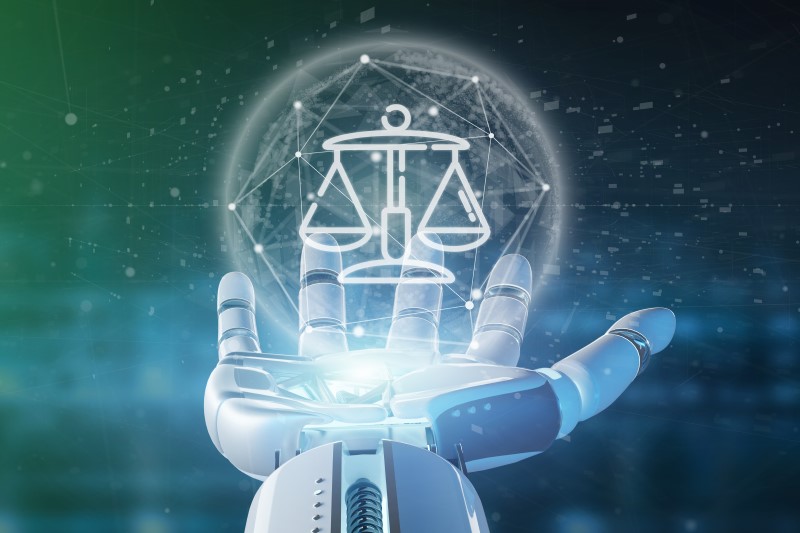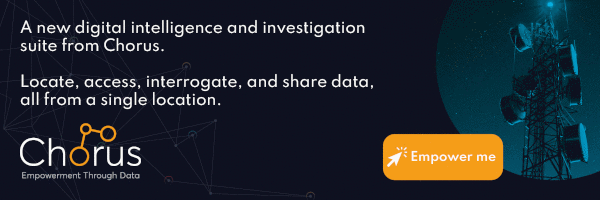Empowering law enforcement through advanced technology could and will prove to be the difference in a variety of investigations and crime types in the future
We all know that policing loves an acronym, so one more should not hurt. AAA or ‘Triple A’ as it is known in the tech industry focuses on three of the current biggest buzz words. Automation, Artificial Intelligence (AI), and Augmentation. But what do these three terms really mean in a policing context? Chorus has opened an innovation centre in Cambridge designed to explore the art of the possible around doing more with data using these concepts and will be introducing new capability to law enforcement soon.
When dealing with sensitive data that can impact on someone’s liberty or help save a life, terms such as artificial intelligence can be scary. Facial recognition, predictive policing and other terms associated with triple A have not had the best start to policing life with concerns around their use and ethical considerations. But empowering law enforcement through advanced technology could and will prove to be the difference in a variety of investigations and crime types in the future.
Let us look at the first ‘A’.
Automation
Analysts typically spend 80% of their time ‘wrangling’ data (organising, cleansing etc) and only 20% analysing and drawing out insights for operational use. The goal of automation is to flip that statistic around
Automation is the one area out of the three that is most prevalent in current law enforcement. What we mean by automation is where repetitive tasks are left to the system to do the heavy lifting of data collection and processing. This is especially important when faced with overwhelming data that is disparate and varies in type.
Analysts typically spend 80% of their time ‘wrangling’ data (organising, cleansing etc) and only 20% analysing and drawing out insights for operational use. The goal of automation is to flip that statistic around.
One of the best examples of this is the data cleansing element that is offered by Chorus Analyse. Previously, Analysts would have to manually ‘clean’ call data records of duplicates and associated noise before it could be used to generate intelligence and evidence that would be admissible. It could often take weeks to manually process data and it is exactly this type of task that is ripe for automating. Time savings seen from automating this are around 97%, allowing the Analyst to focus on connecting the data and drawing insights.
But true automation would take this one step further. New data sets are constantly appearing and existing ones changing. At the time of writing we have seen O2 change the structure of their call data records, impacting on its processing. True automation recognises the data, no matter what format it is in, and automatically processes it. The clock doesn’t stop on investigations so why should analysis be paralysed by a change in the data.
Artificial Intelligence
NLP understands the context of the cake term and determines if its use is related to criminal activity, or if it is simply someone’s birthday
As with lots of technical buzz words, AI is quite an ambiguous term so what we are focused on is the AI discipline of machine learning. Coined by AI pioneer Arthur Samuel in 1952, the field of machine learning has progressed significantly since then, but the concept remains the same. What we mean by machine learning is making a piece of software ‘smart’ with the ability to adapt without direct instruction from a human. AI has seen some gimmicky interpretations, like the ‘Talkie Toaster’ from Red Dwarf, but it certainly has some real applications to policing.
 Machine leaning can be applied to many areas of intelligence analysis but perhaps the most useful of applications is its use on non-traditional data or unstructured data such as written forms, pictures, and video. Concentrating on Natural Language Processing (NLP) we can give our customers insight from previously difficult to analyse sources. Take for example the recent trend to refer to drugs using common cake names in messages and chat between County Lines drug gangs. Referring to marijuana as ‘Battenberg’, for example. NLP understands the context of the cake term and determines if its use is related to criminal activity, or if it is simply someone’s birthday.
Machine leaning can be applied to many areas of intelligence analysis but perhaps the most useful of applications is its use on non-traditional data or unstructured data such as written forms, pictures, and video. Concentrating on Natural Language Processing (NLP) we can give our customers insight from previously difficult to analyse sources. Take for example the recent trend to refer to drugs using common cake names in messages and chat between County Lines drug gangs. Referring to marijuana as ‘Battenberg’, for example. NLP understands the context of the cake term and determines if its use is related to criminal activity, or if it is simply someone’s birthday.
When drug dealers converse via messaging, they commonly use slang words or more urban terms which prove difficult for Analysts and officers to interpret. The police therefore employ street language experts to decipher chat and messaging between them. What machine learning can do is take that intelligence and democratise it across everyone in law enforcement. This effectively creates a dynamic ‘urban dictionary’ that moves with culture and language and provides intelligence on County Line drug dealing that can help to better safeguard the vulnerable.
Augmentation
Augmentation technologies when applied correctly can amplify the effectiveness of the analysis process. This is achieved by not removing the human in loop from the analysis process but assisting them with the task. Skills in any role can vary, but augmentation can take the abilities and understanding of the very best and share them with others by encoding a workflow and reproducing it.
We all have access to the same tools, it is just being able to exploit them as much as possible to develop insights that can be used
If you’ve seen someone in a similar role to you do something and you’ve thought ‘I’d never be able to do that’ then this is precisely when augmentation fits. We all have access to the same tools, it is just being able to exploit them as much as possible to develop insights that can be used.
Take, for example, some of the most common data sets used in investigations – device downloads and call data records. The system can recognise these data sets and make suggestions on agreed processes that draw answers. The Analyst no longer must look for certain signatures in the data. The system automatically makes suggestions and tells them, ‘it looks like this phone belongs to X’ or proactively generates reports based on the content of the data. This can prevent connections being missed or crimes going unsolved.
The 4th A – Accountability
We have only briefly touched on some examples of their use, but these technologies can bring a number of benefits that boil down to a couple of essential elements. Creating efficiencies and making better decisions. By doing things faster, powered by all your available data, more crime can be solved and more of the public can be protected.
At its core must be integrity, transparency, and of course the human decision-making process. These are principles that are already embraced by Chorus with ‘accountability by design’ at the forefront of the innovation
We know that some of this doesn’t sit comfortably with everyone, but a fundamental feature of AAA must be its ethical use. A code of ethics in policing sets and defines the exemplary standards of behaviour for everyone who works in policing and the same principles must be applied to any use of artificial intelligence as we recognise the need for accountability. We are working alongside several organisations to help develop the framework around the ethical use of data in policing. At its core must be integrity, transparency, and of course the human decision-making process. These are principles that are already embraced by Chorus with ‘accountability by design’ at the forefront of the innovation that happens in our research and development department.
If you’d like to know more about our innovation labs and the technology services that we offer then visit our website or contact us at [email protected].
Related article
 Solving data challenges across law enforcement
Solving data challenges across law enforcement
Data is now at the heart of every investigation, but as well as offering opportunity to improve the service for victims of crime, it can also hinder it. In this article, Boyd Mulvey, CEO and Founder of Chorus, talks about the data challenges currently facing law enforcement and how Chorus believe they have developed a new Intelligence Suite to help overcome them.




